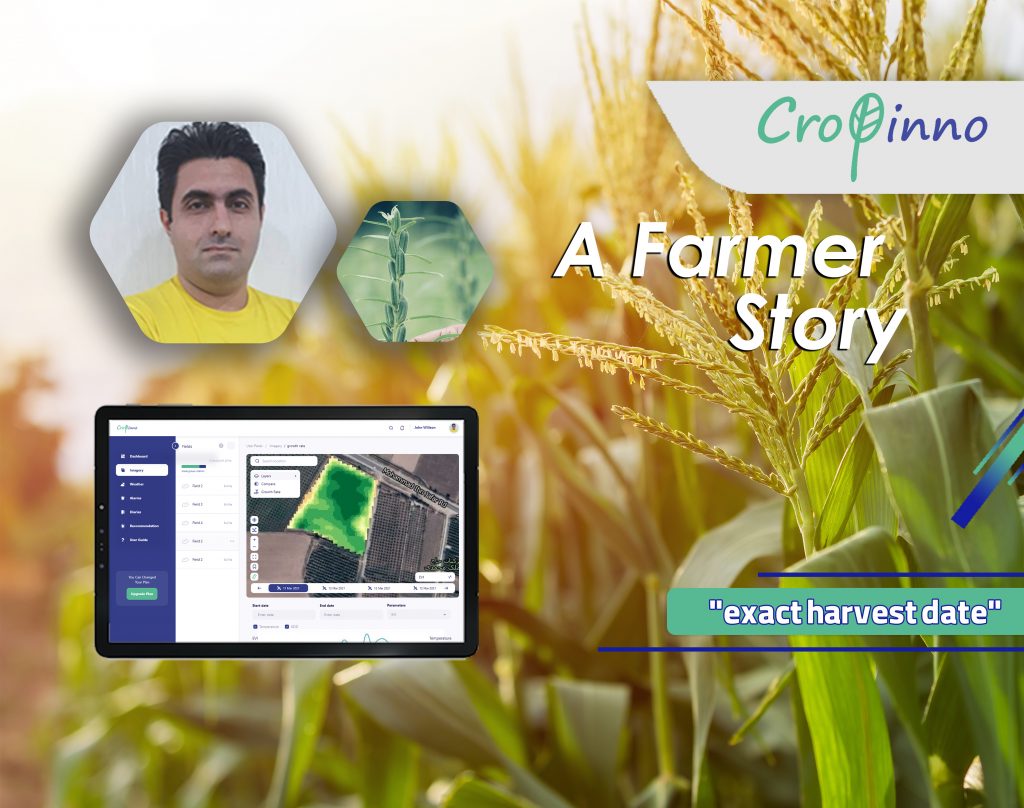In a modern agriculture era, it is crucial to know the best harvest time for different types of crops; Especially in the case of seed products such as sesame and rapeseed, in which seeds may not all mature at the same time.
The “exact harvest date” is when the plant is no longer growing and is starting to dry out. We always encourage farmers to ensure knowing the exact harvest date in each crop cycle by examining the “plant health chart” and “crop moisture maps” provided in the panel and also receiving relevant advices from our experts so that their farm does not suffer from any possible damages due to late harvest or low yield cased by early harvest.
When negligence is the cause…
Time of harvest is critical for capturing optimum mature seed yield. The importance of this matter goes so far that in one of the cases, a farmer (who has been a user of Cropinno for some time) unfortunately faced a 70% loss in final product with only a few days of negligence to the date provided by the platform & expert advisors regarding the exact date of sesame harvest. Yes, that is the date you don’t wanna miss!
- According to satellite images of this farmer’s field (shown below) the vegetative growth of sesame had reached its final stage on September 22, and the stage of seed ripening and reduction of its moisture had already begun.

(Figure 1: Satellite image of sesame plant health index)
Seed Shattering
Sesame, as a very delicate case, must remain in the field until it is completely dry and the seeds are ripe to complete its growth process. But the important thing is that the seed moisture should not fall below the standard; Because otherwise at harvest time, “Seed Shattering” will occur.
Seed shattering refers to the natural shedding of seeds when they ripe. Shattering is the main cause of yield reduction in the final stage of seed production. Although this is a convenient mechanism that many plants use to spread their offspring and guarantee their propagation, in terms of agriculture it negatively affects seed production systems because when seed shattering happens, a significant amount of seed remains on the ground.
The Figure 2 Shows the stop in growth of sesame and its starting to dry. According to the chart, on September 22, the vegetative growth of the plant is completed and the seed maturation phase has begun and its moisture content is decreasing.

(Figure 2: The vegetative growth of sesame stops and it begins to dry)
Also, on October 20, its humidity reached an optimal level and guaranteed a good harvest.

Figure 3: In the satellite image, it is clear that the sesame is completely dried and must be harvested.
Unfortunately, the farmer lost about 70% of his crop due to not paying attention to the exact harvest date calculated by the system.

(Figures 4: Due to not harvesting on the proper date which had been notified to the farmer, sesame spoilage is increasing.)
If you are a farmer or grower, you may find the tools we provide useful in a similar scenario! To find out how, check out easy-to-use platform and start for free here: Cropinno

